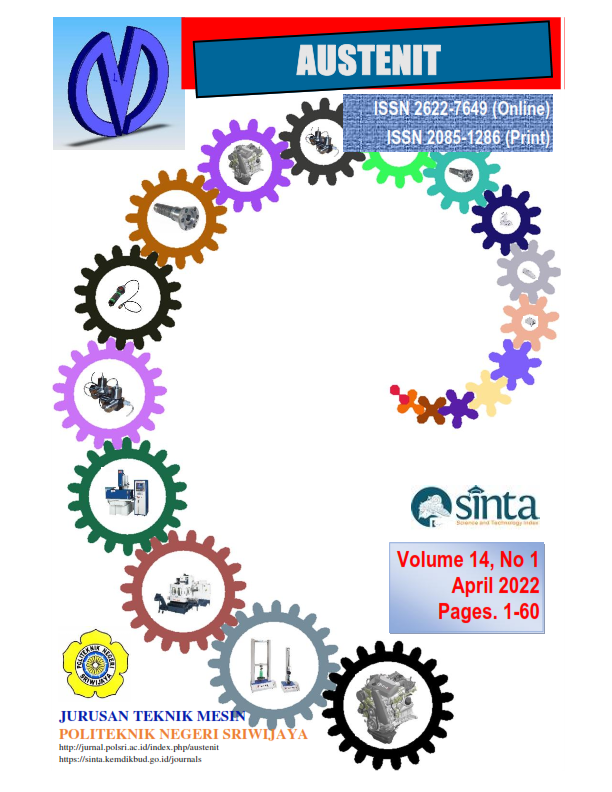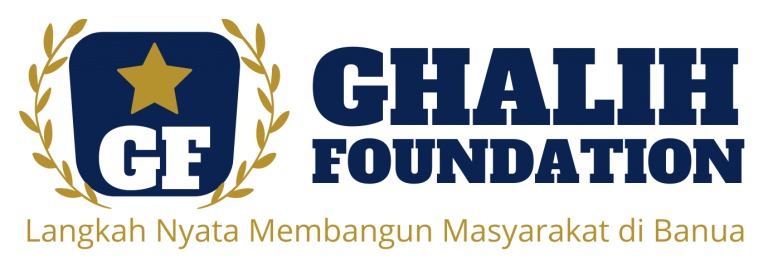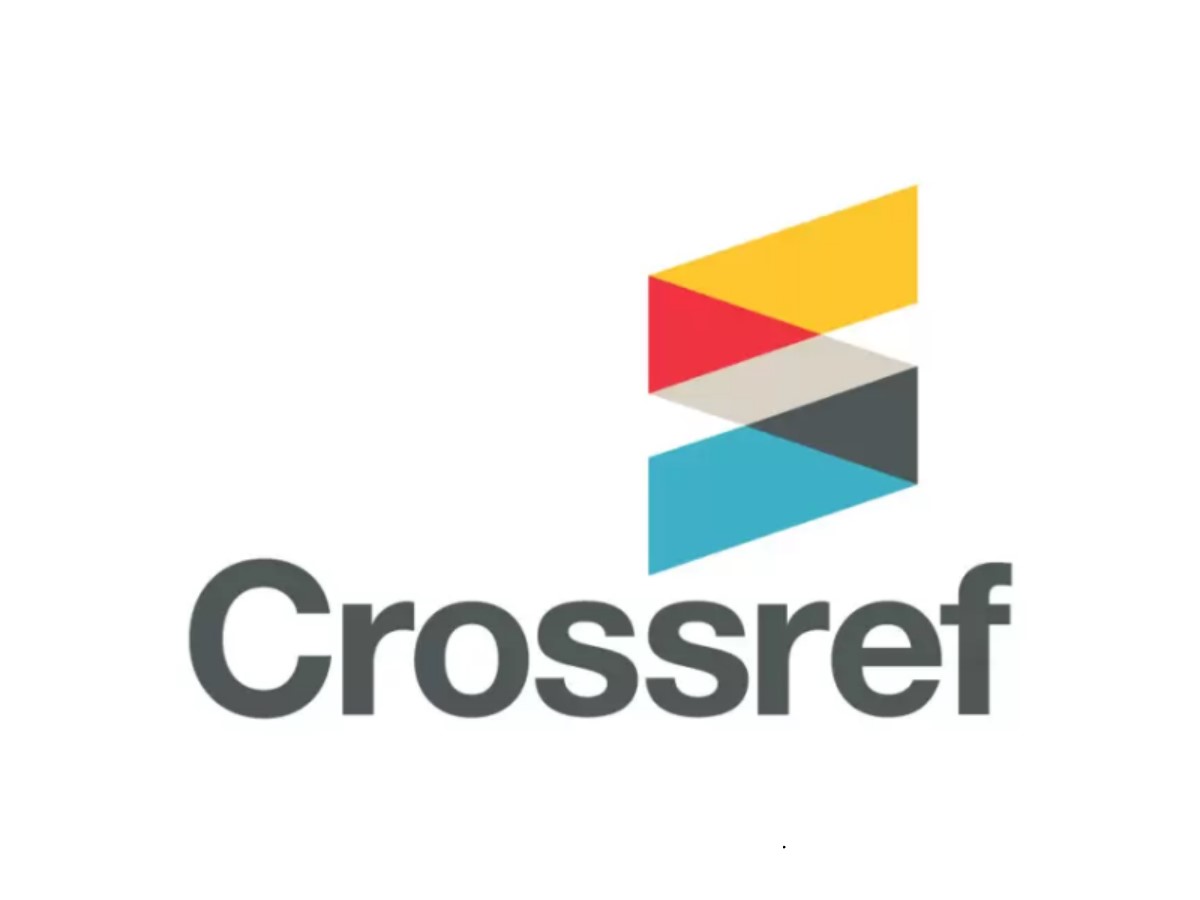PERFORMANCE ANALYSIS OF LiVO3-Ion BATTERY WITH CARBON (Ipomoea Aquatica) AS ANODES
DOI:
https://doi.org/10.53893/austenit.v14i1.4559Keywords:
Lithium Ion battery, Voltammogram, Galvanostatic Charging-Discharging, Carbon (Ipomoea Aquatica), DiffractogramAbstract
This research was conducted by utilizing water spinach which is found in swampy areas as new material for support in battery. Water spinach stems were separated used as carbon precursor. The carbon was prepared through hydrothermal and pyrolysis processes. The battery was constructed using the carbon anode and cathode from LiVO3. The LiVO3 was produced by using hydrothermal process of LiCl, V2O5, and NaOH in 200ºC 30 bar for 16 hours. The performance of the battery was evaluated using cyclic voltammetry and galvanostatic charging – discharging methods on potentiostat. The electrolyte used was LiCl in liquid or gel electrolyte with concentrations of 10%, 20% and 40%, respectively. The binders were used PU and melamine. Material characterization reveal that the carbon has crystaline phase, conductivity and pores which therefore carbon has the capability to be used as anode precursor. The evaluation of battery performance showed that the highest current value was found in battery with 40% LiCl of liquid electrolyte and polyurethabe binder, that is 0.22 A. The highest power 5.36 x   W, energy 1.80 x  Wh, and capacity ​8.94 x  F was found in battery with 40% LiCl of liquid electrolyte with binder PU.. The lowest battery discharge slope 0.0039 was found in 40% LiCl of liquid electrolyte with PU binder. These findings provides an alternative to the use of materials in Lithium ion batteries without compromising the performance of their application.
Downloads
References
Febrika, N. 2019. “Carbon Nano-sheets Tereduksi Dari Kulit Batang Kayu Gelam Dan Aplikasinya Pada Kinerja Baterai Litiumâ€. thesis. Fakultas Kimia. Universitas of Sriwijaya, Indonesia.
Ingried, V. “Preparation of Water Spinach Stalks Based Carbon (Ipomoea Aquatica) as Anodes and Its Applications on LiTiO2-Ion Battery Performance..†M.T. thesis, University of Sriwijaya, Indonesia.
Julien Christian M, 2014. “Comparative Issues of Cathode Materials for Li-Ion Batteries. Inorganics 2, 132-154. ISSN 2304-6740. https://doi.org/10.3390/inorganics2010132
Junaidi, A., & Seprianto, D, 2011. Pengaruh Temperatur Sinter Terhadap Kekerasan Elektroda Tembaga-5%Karbon Yang Dibuat Dengan Metode Serbuk Metalurgi. AUSTENIT, 3(02). https://doi.org/10.5281/zenodo.4544245
Liu, G. Q., Xu, N., Zeng, C. L., & Yang, K. (2002). Synthesis and electrochemical properties of LIV3O8 phase. Materials Research Bulletin, 37(4), 727–733. https://doi.org/10.1016/S0025-5408(02)00696-7
Oswal M, Paul J, Zhao R, 2010. “A Comparative Study of Lithium-Ion batteries:. University of Southern California. pp. 2. https://scholar.google.com/scholar_lookup?title=A+Comparative+Study+of+Lithium-Ion+Batteries&author=Oswal,+M.&author=Paul,+J.&author=Zhao,+R.&publication_year=2010
Syarif, N., Ivandini Tribidasari, Wibowo., 2012. Direct Synthesis carbon/metal oxide composites for electrochemical capasitors electrode, International Transaction Journal of Engineering, Management & Applied Sciences & Technologies, 3, 21-24. https://scholar.google.com/citations?view_op=view_citation&hl=id&user=U1_1hGUAAAAJ&citation_for_view=U1_1hGUAAAAJ:u5HHmVD_uO8C
Syarif, N., Pardede M.C., 2014, “Hydrothermal Assisted microwave pyrolysis of water hyacinth for electrochemical capasitors electrodesâ€, International Transaction Journal of Engineering, Management & Applied, 5, 95-101. https://scholar.google.com/citations?view_op=view_citation&hl=id&user=U1_1hGUAAAAJ&citation_for_view=U1_1hGUAAAAJ:2osOgNQ5qMEC
Syarif, N., Prasagi M., 2016, “Preparation of carbon nanosheets from Gelam wook bark and its electrochemical studyâ€, Carbon Sciences and Technology, 8, 35-42. https://scholar.google.com/citations?view_op=view_citation&hl=id&user=U1_1hGUAAAAJ&citation_for_view=U1_1hGUAAAAJ:zYLM7Y9cAGgC
Syarif, N., Tribidasari I.A., Widayanti W., 2013, “Binder-less activated carbon electrode from gelam wood for use in supercapasitorsâ€, Journal of Electrochemicals Sccience Engineering, 3, 37-45. https://scholar.google.com/citations?view_op=view_citation&hl=id&user=U1_1hGUAAAAJ&citation_for_view=U1_1hGUAAAAJ:u5HHmVD_uO8C
Xu, H. Y., Wang, H., Song, Z. Q., Wang, Y. W., Yan, H., & Yoshimura, M. (2004). Novel chemical method for synthesis of LiV3O8 nanorods as cathode materials for lithium ion batteries. Electrochimica Acta, 49(2), 349–353.
Yunita, Eka. 2018. “Application of Water Lettuce (Pistia S.) as Conductive Carbon in Electromical Capasitorâ€. Journal Chemical Engineering Transaction. Vol 63: 449-504. https://doi.org/10.3303/CET1863084
Downloads
Published
How to Cite
Issue
Section
License
Copyright (c) 2022 Authors and Publisher

This work is licensed under a Creative Commons Attribution-ShareAlike 4.0 International License.
The Authors submitting a manuscript do so on the understanding that if accepted for publication, Authors retain copyright and grant the AUSTENIT right of first publication with the work simultaneously licensed under a Creative Commons Attribution-ShareAlike License that allows others to share the work with an acknowledgment of the work's authorship and initial publication in this journal.
AUSTENIT, the Editors and the Advisory International Editorial Board make every effort to ensure that no wrong or misleading data, opinions or statements be published in the journal. In any way, the contents of the articles and advertisements published in AUSTENIT are the sole responsibility of their respective authors and advertisers.














